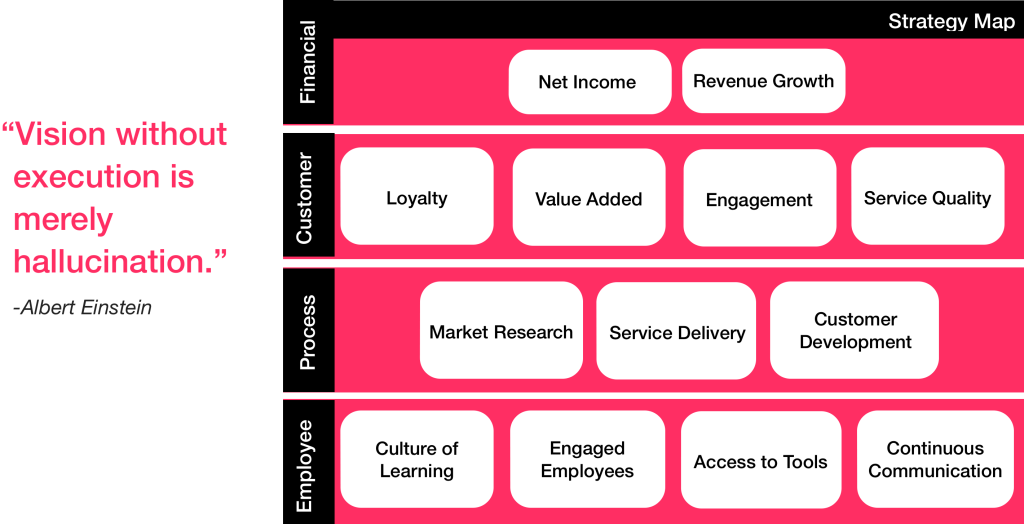
21 Sep Strategy Execution Starts Here: A Balanced Scorecard Overview
Strategy execution is one of the key ingredients in the secret sauce of successful companies. But more often than not, companies don’t effectively translate their strategy into action. In many cases, leaders state a vision and then either put it on a shelf or just assume that everyone knows what to do to get there. But in order to make the company’s vision a reality, leaders must align the work that people do everyday with the important objectives that drive success.
Balanced Scorecard is a strategic planning and management system that helps business leaders with planning and strategy execution so that they can reach their goals and achieve their vision. The concept was coined by David Kaplan and Robert Norton in 1992 and has since been adopted by many of the world’s most successful companies. Kaplan and Norton believe that companies should go beyond just looking at traditional financial measures that tell a story of what has already happened, and measure success from various perspectives across the organization. In order to do this, leaders must first translate their vision into specific goals and measures, which are at the heart of the Balanced Scorecard strategic management system.
STATE THE VISION
To achieve the vision, you must first articulate the vision. A well stated vision is inspirational, clear, concise, and memorable. Visions are rarely about numbers. The best visions are aspirational and focus on the long term effect the company wants to have on its customers, industry, the economy and/or the environment.
IDENTIFY THE PERSPECTIVES
A primary tenant of the Balanced Scorecard is that success must be viewed from multiple perspectives across the organization, not just through a financial lens. Though the perspectives may vary among organizations, the most common perspectives are:
- FINANCIAL
- CUSTOMER
- INTERNAL BUSINESS PROCESS
- EMPLOYEE
DEFINE THE OBJECTIVES
Objectives are key areas in which the company must excel in order to achieve the vision. There should be a small number of objectives in each perspective because the focus needs to be as narrow as possible. To determine objectives, ask yourself what success looks like from the various perspectives. For example, when defining objectives for the employee perspective, ask “To achieve our vision, how will we sustain our ability to change and grow?”. Or, from the customer’s perspective , “To achieve our vision, how should we appear to our customers?” The answers will set the framework for the objectives.
ATTACH THE MEASURES
Measures tell the story of the company’s progress towards its goals. Measures of objectives in the financial perspective are typically lagging indicators letting us know what’s already happened. As we move down the Scorecard through the customer and process perspective, the measures should be progressively forward looking. When we get to the foundation of any organization, the employee perspective, measures should be almost entirely leading indicators since the organization’s culture almost always drives the success in all of the company’s other objectives. Measures should have targets that are aggressive, yet attainable.
ASSIGN INITIATIVES
Assigning initiatives is critical to the success of the Balanced Scorecard system. It is with this step that strategy is truly translated to action. Giving people projects or tasks that are associated with objectives that directly lead to the vision allows people to see how their efforts contribute to the company’s success in achieving it’s vision. People want to be part of something bigger than themselves. Great leaders work relentlessly to show employees exactly how their contributions matter.
MONITOR THE STRATEGY
The vision, perspectives, objectives, measures, and initiatives collectively combine to create a Strategy Map. When translated to a narrative, the Strategy Map gives the story of the strategy and shows everyone the route to achieve the vision. The Strategy Map should become a living part of the organization that is discussed and consulted at every turn. As such, the strategy should be monitored and modified as the business environment evolves.

Sorry, the comment form is closed at this time.